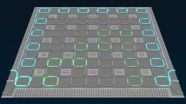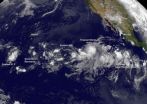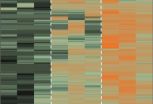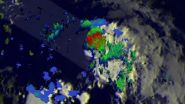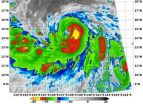(Press-News.org) Boulder, Colo., USA - In the August 2014 issue of LITHOSPHERE, Steve Israel of the Yukon Geological Survey and colleagues provide conclusions regarding the North American Cordillera that they say "are provocative in that they blur the definition of tectonic terranes, showing that many observations of early geologists can be attributed to evolving geologic processes rather than disparate geologic histories."
Western North America is characterized by the Cordilleran accretionary mountain belt, which has seen episodic plate convergence since the early Paleozoic, about 253 million years ago. Israel and colleagues write that this long-lived accretionary history of the northern Cordillera has resulted in a "collage of terranes" and overlap assemblages that seemingly have quite disparate geologic histories.
Early geologic research in the North American Cordillera identified several tectonic terranes that were considered to be fundamentally different from one another based upon lithologic and age characteristics. Many of these terranes were thought to have traveled great distances before separately accreting to the ancient North American margin.
Two of the largest terranes, the Alexander terrane and Wrangellia, found along western British Columbia, southwest Yukon, and eastern Alaska, have long been considered to be exotic to each other and to North America. However, in their investigation of relationship between Wrangellia and the Alexander terrane, Israel and colleagues have found evidence that suggests that the two terranes have shared a history since the Latest Devonian (about 364 million years ago), and that portions of Wrangellia are built upon a basement composed of the Alexander terrane.
Israel and colleagues note that this conclusion would see the collage transformed into a more coherent picture with geologic ties between terranes that were previously thought of as complete separate entities. They conclude that this view of terranes adheres to the more traditional ideas of possible links between Laurentia and the accreted terranes with a few seemingly truly exotic pieces caught up in the collage.
FEATURED ARTICLE
New ties between the Alexander terrane and Wrangellia and implications for North America Cordilleran evolution
Steve Israel et al., Yukon Geological Survey, P.O. Box 2703(K-14), Whitehorse, Yukon, Y1A 2C6, Canada. August 2014 issue; online at http://dx.doi.org/10.1130/L364.1.
This and other articles in this issue were first posted online in May 2014:
1. Two related papers investigate topography, erosion, and climate in the Bolivian Andes;
2. A geochronologic analysis of the formation of the Sierra Norte de Córdoba and Pampean evolution in Argentina; and
3. Dating of rocks at Ama Drime, Tibet, to further understand the early evolution of the Himalaya.
Abstracts are online at http://lithosphere.gsapubs.org/content/early/recent. Representatives of the media may obtain complimentary copies of LITHOSPHERE articles by contacting Kea Giles at the address above.
Please discuss articles of interest with the authors before publishing stories on their work, and please make reference to LITHOSPHERE in articles published. Contact Kea Giles for additional information or assistance.
Non-media requests for articles may be directed to GSA Sales and Service, gsaservice@geosociety.org.
Tectonic control of topography, rainfall patterns, and erosion during rapid post Ma uplift of the Bolivian Andes
Kelin X. Whipple, School of Earth and Space Exploration, Arizona State University, Tempe, Arizona 85287, USA; and Nicole M. Gasparini, Dept. of Earth and Environmental Sciences, Tulane University, New Orleans, Louisiana 70118, USA. August 2014 issue; online at http://dx.doi.org/10.1130/L325.1.
Study of the deformation, erosion, and landscape evolution of the flanks of the Central Andean Plateau -- the region above 3 km elevation between 13 degrees and 27 degrees south that includes the Puna plateau, the Altiplano, and parts of the Eastern and Western Cordilleras and thus not restricted to internally drained regions -- is critical to testing provocative hypotheses regarding the timing, magnitude, and driving mechanisms of plateau surface uplift. As such, the style, rate, and timing of deformation in the Bolivian Andes -- the eastern flank of the Central Andean Plateau -- is of considerable interest to geologists, geophysicists, and geomorphologists interested in the interaction of processes in Earth's interior with those acting on its surface and, consequently, has been much debated.
Diagnosing climatic and tectonic controls on topography: Eastern flank of the northern Bolivian Andes
Nicole M. Gasparini, Dept. of Earth and Environmental Sciences, Tulane University, New Orleans, Louisiana 70118, USA, and Kelin X. Whipple, School of Earth and Space Exploration, Arizona State University, Tempe, Arizona 85287, USA. August 2014 issue; online at http://dx.doi.org/10.1130/L322.1.
Geologists have long debated whether high rainfall rates can drive high erosion rates that in turn drive high rock uplift rates. This process could potentially contribute to building and sustaining high relief in mountains, and it has been previously hypothesized that high rainfall rates are a primary control responsible for the high relief and morphology of rivers on the Beni escarpment in the Northern Bolivian Andes, a steep topographic step of approximately 3.5 km over a distance of 45 km. This study explores that hypothesis using previously published erosion rate data, along with rainfall rate and topographic data, and a computational landscape evolution model. The results show that high rainfall rates do not drive high erosion rates on the Beni escarpment. Instead, the data suggest that rock uplift rates increase into the escarpment and this pattern in rock uplift rate controls the pattern in erosion rates, which is independent of the rainfall pattern. The rainfall pattern does appear to affect the shape of river profiles, but it is a secondary control, and the rock uplift pattern is the primary control. Rainfall and rock uplift patterns cannot explain all of the changes in topography on the Beni escarpment, and rock type may also influence the shape of some river channels, however it does not appear to be influential in all cases. The study also presents guidelines for deciphering the role of climate and tectonics on the morphology of landscapes in other settings.
Geochronology of igneous rocks in the Sierra Norte de Córdoba (Argentina): Implications for the Pampean evolution at the western Gondwana margin
W. von Gosen et al., Geozentrum Nordbayern, Krustendynamik, Friedrich-Alexander-Universität Erlangen-Nürnberg, Schlossgarten 5, D-91054 Erlangen, Germany. August 2014 issue; online at http://dx.doi.org/10.1130/L344.1.
The easternmost segment of the Eastern Sierras Pampeanas unit in northwest Argentina is bordered in the east by the western pre-Andean Gondwana margin. Isotopic dating of different igneous rocks from the Sierra Norte de Córdoba combined with results of structural analyses permit to interpret the different stages of the Pampean evolution of this unit through time. Deposition of a thick pile of clastic sediments at the western Gondwana margin in the Neoproterozoic to Early Cambrian time interval is related to a passive margin, which presumably was underlain by west Gondwanan crust. East- to northeast-directed subduction beneath the west Gondwana margin was combined with the formation of a magmatic arc and compressive deformation in the upper (eastern) plate. A second-stage deformation with dextral mylonitization also in the Early Cambrian was accompanied by synkinematic intrusive activity. It can be related to intraplate compression due to ridge subduction and/or collision, which might have been followed by accretion of a continental terrane in the west. This was directly followed by uplift still in the Early Cambrian whereas subsequent igneous intrusions and extrusions indicate that the final stage of the Pampean evolution was terminated in the Middle Cambrian.
Eocene deep crust at Ama Drime, Tibet: Early evolution of the Himalayan orogen
Dawn A. Kellett et al., Geological Survey of Canada, Ottawa, Ontario K1A 0E8, Canada. August 2014 issue; http://dx.doi.org/10.1130/L350.1.
Rocks that were metamorphosed first at high pressure and then at high temperature can be found exposed in the Ama Drime massif, South Tibet, in the central-eastern part of the Himalayan collisional mountain belt. In this study, Ama Drime rocks were dated using two radiometric dating methods: Lu (lutetium )-Hf (hafnium) geochronology of garnet, and U (uranium)-Pb (lead) geochronology of zircon. Garnet from the three samples analyzed yielded approximate Lu-Hf ages of 37.5, 36.0, and 33.9 million years. Based on this, Dawn A. Kellett and colleagues estimate that the high pressure component of garnet in the rocks grew about 38 million years ago. This is the oldest age for burial of the lower Indian continental crust beneath Tibet reported from the central-eastern Himalaya. High-temperature metamorphism followed at about 15-13 million years ago, as indicated by their U-Pb zircon ages. Unlike ultra-high pressure rocks found in the northwest Himalaya, the Ama Drime rocks were not formed by rapid burial and exhumation of a cold subducted slab at the leading edge of the Indian plate as it began to collide with Asia. The rocks instead were buried and metamorphosed as continental crust thickened during the early stages of the still ongoing continental collision between India and Asia. They then resided in the lower-middle crust for more than 20 million years before being re-heated and ultimately exhumed to the surface. These new data provide solid evidence for Indian crust involved in the Himalayan collision having already reached at least ~60 km thickness by Late Eocene.
INFORMATION:
http://www.geosociety.org/
Contact: Kea Giles
+1-303-357-1057
kgiles@geosociety.org
Cordilleran terrane collage
August 2014 issue of Lithosphere
2014-08-01
ELSE PRESS RELEASES FROM THIS DATE:
On-chipt topological light
2014-08-01
Topological transport of light is the photonic analog of topological electron flow in certain semiconductors. In the electron case, the current flows around the edge of the material but not through the bulk. It is "topological" in that even if electrons encounter impurities in the material the electrons will continue to flow without losing energy.
In the photonic equivalent, light flows not through and around a regular material but in a meta-material consisting of an array of tiny glass loops fabricated on a silicon substrate. If the loops are engineered just right, ...
Society bloomed with gentler personalities and more feminine faces
2014-08-01
DURHAM, N.C. -- Modern humans appear in the fossil record about 200,000 years ago, but it was only about 50,000 years ago that making art and advanced tools became widespread.
A new study appearing Aug. 1 in the journal Current Anthropology finds that human skulls changed in ways that indicate a lowering of testosterone levels at around the same time that culture was blossoming.
"The modern human behaviors of technological innovation, making art and rapid cultural exchange probably came at the same time that we developed a more cooperative temperament," said lead author ...
History of culture visualized through art history, physics, complexity
2014-08-01
Coral Gables, Fla. (July 31, 2014) -- Quantifying and transforming the history of culture into visual representation isn't easy. There are thousands of individual stories, across thousands of years, to consider, and some historical conditions are nearly impossible to measure.
Addressing this challenge, Dr. Maximilian Schich, associate professor of arts and technology at The University of Texas at Dallas, brought together a team of network and complexity scientists, including University of Miami physicist Chaoming Song, to create and quantify a big picture of European ...
'Normal' bacteria vital for keeping intestinal lining intact
2014-08-01
August 1, 2014 — (BRONX, NY) — Scientists at Albert Einstein College of Medicine of Yeshiva University have found that bacteria that aid in digestion help keep the intestinal lining intact. The findings, reported online in the journal Immunity, could yield new therapies for inflammatory bowel disease (IBD) and a wide range of other disorders.
The research involved the intestinal microbiome, which contains some 100 trillion bacteria. The role of these microorganisms in promoting or preventing disease is a major emerging field of study. Einstein scientists found that absorption ...
A train of 5 tropical cyclones in the Central and Eastern Pacific
2014-08-01
A train of developing tropical low pressure areas stretch from the Eastern Pacific Ocean into the Central Pacific and they were captured in an image from NOAA's GOES-West satellite on August 1. The train of five tropical lows include the remnants of Tropical Storm Genevieve and newly developed Tropical Storm Iselle.
NOAA's GOES-West satellite captured an image of the Pacific Ocean on August 1 at 1200 UTC (8 a.m. EDT) that showed post-tropical cyclone Genevieve's remnants between three other systems. The GOES-West image shows the train of storms with a well-developed Iselle ...
A map for eye disease
2014-08-01
Understanding eye diseases is tricky enough. Knowing what causes them at the molecular level is even more confounding.
Now, University of Iowa researchers have created the most detailed map to date of a region of the human eye long associated with blinding diseases, such as age-related macular degeneration. The high-resolution molecular map catalogs thousands of proteins in the choroid, which supplies blood and oxygen to the outer retina, itself critical in vision. By seeing differences in the abundance of proteins in different areas of the choroid, the researchers can ...
NASA finds heavy rainfall and wind shear in newborn Tropical Storm Bertha
2014-08-01
VIDEO:
This 3-D flyby of Tropical Storm Bertha on Aug. 1 was created from TRMM satellite data. It shows (from the south) intense thunderstorms were reaching heights of over 15km (about...
Click here for more information.
The Tropical Rainfall Measuring Mission satellite known as TRMM found rain was falling heavily in the Atlantic Ocean's second tropical storm of the hurricane season. Bertha was close to the Lesser Antilles, prompting warnings and watches.
The National Hurricane ...
Reptile Database surpasses 10,000 reptile species
2014-08-01
More than 10,000 reptile species have been recorded into the Reptile Database, a web-based catalogue of all living reptile species and classification, making the reptile species among the most diverse vertebrate groups in the world, alongside bird and fish species.
For some time, experts have projected that 2014 would mark the year that reptiles would become the most diverse vertebrate group in the world. Reptiles include snakes, lizards, turtles, crocodiles, tuataras and amphisbaenians.
"Officially, we have logged 10,038 reptile species into the database, which is ...
NASA sees Tropical Storm Halong's 'best side'
2014-08-01
NASA satellite data showed Tropical Storm Halong's "best side" or most powerful side was east of its center. That's where the coldest cloud top temperatures and strongest thunderstorms appeared on satellite imagery.
On August 1 at 13:30 UTC (9:30 a.m. EDT) the Moderate Resolution Imaging Spectroradiometer or MODIS instrument aboard NASA's Terra satellite captured an infrared picture of Tropical Storm Halong. The infrared data showed the coldest, strongest thunderstorm cloud-top temperatures east of the center of circulation. Cloud tops were as cold as -80F/-62C. Cloud ...
Advances in assisted reproduction create more options & new legal issues for LGBT couples
2014-08-01
New Rochelle, NY, August 1, 2014—Lesbian, gay, bisexual, and transgender individuals who want to conceive a child may face the same problems as some of their heterosexual and cisgendered peers, such as reduced fertility, but in addition they often face additional physiological and legal challenges to become parents. A comprehensive review of the most recent advances in assisted reproduction options is presented in the article "LGBT Assisted Reproduction: Current Practice and Future Possibilities," published in LGBT Health, a peer-reviewed journal from Mary Ann Liebert, ...
LAST 30 PRESS RELEASES:
Numbers in our sights affect how we perceive space
SIMJ announces global collaborative book project in commemoration of its 75th anniversary
Air pollution exposure and birth weight
Obstructive sleep apnea risk and mental health conditions among older adults
How talking slows eye movements behind the wheel
The Ceramic Society of Japan’s Oxoate Ceramics Research Association launches new international book project
Heart-brain connection: international study reveals the role of the vagus nerve in keeping the heart young
Researchers identify Rb1 as a predictive biomarker for a new therapeutic strategy in some breast cancers
Survey reveals ethical gaps slowing AI adoption in pediatric surgery
Stimulant ADHD medications work differently than thought
AI overestimates how smart people are, according to HSE economists
HSE researchers create genome-wide map of quadruplexes
Scientists boost cell "powerhouses" to burn more calories
Automatic label checking: The missing step in making reliable medical AI
Low daily alcohol intake linked to 50% heightened mouth cancer risk in India
American Meteorological Society announces Rick Spinrad as 2026 President-Elect
Biomass-based carbon capture spotlighted in newly released global climate webinar recording
Illuminating invisible nano pollutants: advanced bioimaging tracks the full journey of emerging nanoscale contaminants in living systems
How does age affect recovery from spinal cord injury?
Novel AI tool offers prognosis for patients with head and neck cancer
Fathers’ microplastic exposure tied to their children’s metabolic problems
Research validates laboratory model for studying high-grade serous ovarian cancer
SIR 2026 delivers transformative breakthroughs in minimally invasive medicine to improve patient care
Stem Cell Reports most downloaded papers of 2025 highlight the breadth and impact of stem cell research
Oxford-led study estimates NHS spends around 3% of its primary and secondary care budget on the health impacts of heat and cold in England
A researcher’s long quest leads to a smart composite breakthrough
Urban wild bees act as “microbial sensors” of city health.
New study finds where you live affects recovery after a hip fracture
Forecasting the impact of fully automated vehicle adoption on US road traffic injuries
Alcohol-related hospitalizations from 2016 to 2022
[Press-News.org] Cordilleran terrane collageAugust 2014 issue of Lithosphere

